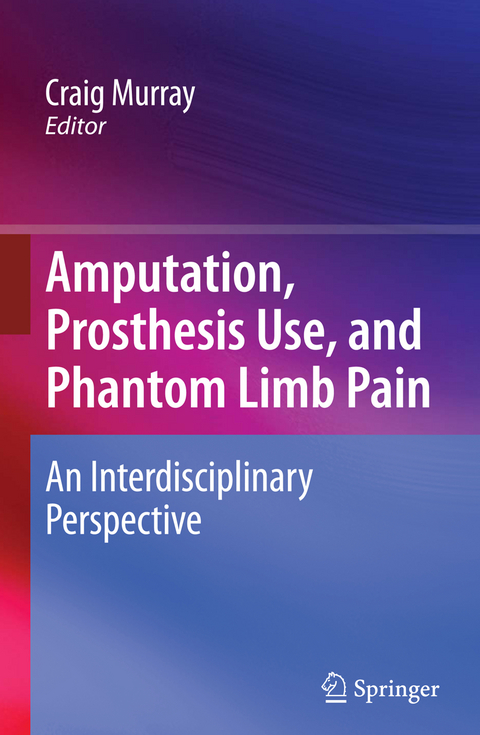
Amputation, Prosthesis Use, and Phantom Limb Pain
Springer-Verlag New York Inc.
9780387874630 (ISBN)
- Titel wird leider nicht erscheinen
- Artikel merken
Craig Murray is a Senior Lecturer at Lancaster University with research specialization in health, clinical psychology, and embodiment. He has more than 100 journal, book, and conference publications. These include papers in key Health Psychology (British Journal of Health Psychology; Health Informatics; Health Psychology; Health, Risk and Society; Qualitative Health Research, Psychology, Health and Medicine; Social Science and Medicine) Mental Health (Journal of Nervous and Mental Disease; Journal of Mental Health) and Rehabilitation (CyberPsychology and Behavior; Disability and Rehabilitation; International Journal on Disability and Human Development) journal titles. He has published widely on the topic of amputation, prosthesis use and phantom limb pain and led funded research programmes on these topics. This work has received international media attention (including television: Canadian Discovery Channel, Australian Broadcasting Corporation radio and television, and America’s CNN; and press: e.g. The Times, Australia’s Sydney Morning Herald, China’s People Daily, Russian Newsweek, New Yorker magazine). He is editor of ‘Psychological Scientific Perspectives on out-of-body experiences’ (2009, Nova Science Publishers, New York).
Developing an Interdisciplinary Perspective on Amputation, Prosthesis Use, and Phantom Limb Pain: An Introduction.- Need-Directed Design of Prostheses and Enabling Resources.- Ethical and Medico-Legal Issues in Amputee Prosthetic Rehabilitation.- Monitoring of Upper Limb Prosthesis Activity in Trans-Radial Amputees.- Adaptation to Amputation and Prosthesis Use.- Understanding Adjustment and Coping to Limb Loss and Absence through Phenomenologies of Prosthesis Use.- Return to Work After Amputation.- Gender, Sexuality and Prosthesis Use: Implications for Rehabilitation.- Post Amputation Chronic Pain Profile and Management.- Phantom Limb Pain; Prevalence, Mechanisms and Associated Factors.- Management of Phantom Limb Pain.- Virtual Solutions to Phantom Problems: Using Immersive Virtual Reality to Treat Phantom Limb Pain.
| Erscheinungsdatum | 19.12.2018 |
|---|---|
| Zusatzinfo | IX, 203 p. |
| Verlagsort | New York, NY |
| Sprache | englisch |
| Maße | 155 x 235 mm |
| Themenwelt | Medizin / Pharmazie ► Medizinische Fachgebiete ► Chirurgie |
| Medizin / Pharmazie ► Pflege | |
| Medizin / Pharmazie ► Physiotherapie / Ergotherapie ► Orthopädie | |
| Medizin / Pharmazie ► Physiotherapie / Ergotherapie ► Rehabilitation | |
| Technik ► Medizintechnik | |
| Schlagworte | Adaption to amputation • Analysis • biomedical engineering • Congenital Limb Deficiencies • Medicine • Monitor • Phantom Limb Pain • Phenomenologies of Prosthesis Use • Post Amputation Chronic Pain • Prostheticians • Rehabilitation • Technology |
| ISBN-13 | 9780387874630 / 9780387874630 |
| Zustand | Neuware |
| Informationen gemäß Produktsicherheitsverordnung (GPSR) | |
| Haben Sie eine Frage zum Produkt? |
aus dem Bereich


